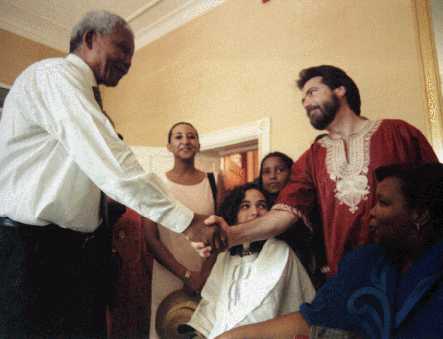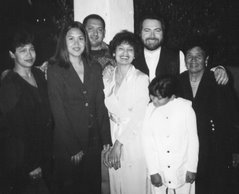The 200th Anniversary of the 1808 Slave Uprising in the Cape
In 2008 we will celebrate the 200th anniversary of an exceptional event, the 1808 slave rebellion involving over 350 participants at the Cape of Good Hope, which ended in tragedy for the brave 'rainbow' leadership group, made up of a Mauritian Slave, two Irishmen, a Batavian Slave, an Indian Slave and two indigenous Khoi participants. The story has all the hallmarks of intrigue, innovation, passion, foolhardiness, bravery, comedy, revolutionarism, and tragedy. It could make a gripping movie by any standard.
The uprising was born in a time when stories arrived in the Cape about uprisings in America and the Caribbean, and of the revolution in Haiti. Progressive anti-slavery legislation had also been passed by the British and the British power foothold was strengthening in the Cape Colony. It was under these circumstances that fate brought together a slave tailor by the name of Louis of Mauritius and two Irishmen, James hooper and Michael Kelly. As it happens the first dicussions took place in a tavern. They were joined by Jeptha of Batavia and later by two more slaves Abraham and Adonis. Another slave discribed as a 'Coolie' and two Khoi men joined the leadership party. The plan was to march from the rural districts gathering slaves on the way and then to enter Cape Town, seize the Amsterdam Battery, turn the guns on the Castle and then negotiate a peace which would involve establishing a free state.
On 27 October 1808 the long march began on the farm of Gerhardus Louw,Vogelgezang, just north of Malmesbury where two more slave co-conspirators awaited their arrival. Louis dressed as a visiting 'Spanish' sea Captain on horseback, flanked by two 'British' officers, namely Hooper and Kelly in disguise managed to convince the absentee farmer's wife to hand over all their slaves into the hands of the 'military' party. They even managed to get the farmer's wife to entertain them with a good meal and rest overnight. From Vogelgezang the liberator party went farm to farm and persuaded the slaves and Khoi servants to join them. Only on one farm did they meet any serious resistance. The group then split into two columns taking different routes and a rondevous point was established in Slt River where they would muster for the final push on the town. There was little violence throughout the entire episode other than some vandalising of property.
The news however reached the Governor of the Cape, Lord Caledon. Infantry and Cavalry lay in wait and ambushed the March ay Salt River where the participants scattered. The leadership group were all rounded up when the dragoons captured 326 of the marchers and took them to internment sites at the Castle and Tygerberg hills. Louis was picked up in Wynberg and Hooper and Kelly were captured in Saldana Bay. Of these 47 were put on trial including Hooper, Kelly, Lois and the two Khoi leaders. Nine were found guilty of treason and sentenced to be hanged. Another 11 were sentenced to death as well, for 'active particpation'. Many others were given lessor sentences including imprisonment on Robben Island. Most of the death sentences were carried out after confirmation by Governor Caledon, including that of Louis of Mauritius and James Hooper. Michael Kelly however was sent to prison in England.
Here is a story that presents a challenge to turn into a novel, a play or a movie. This year, 2007, we celebrate the 200th anniversary of the formal British abolition of the slave trade on the high sea s as a result of pressure from abolitionists. But in 2008 we can celebrate a very real heroic event of Cape Slaves to free themselves.
Subscribe to:
Post Comments (Atom)




No comments:
Post a Comment